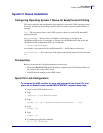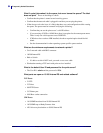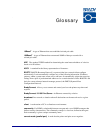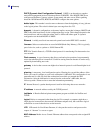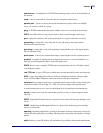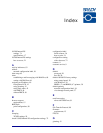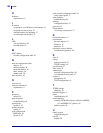
99
Glossary
07/18/2008 BradyConnect 10/100 Internal Print Server User Guide Y885775
name server A workstation on a TCP/IP network that provides a list of all workstations on
the network.
node A device connected to a network, such as a computer or print server.
parallel port A port on a device that sends information in groups of bits over multiple
wires, one wire for each bit in a group.
ping A TCP/IP command that determines whether a device is accessible on the network.
POP3 Post Office Protocol, the protocol used to retrieve email through a mail server.
port A physical connector, such as the parallel port, or a logical connection to a device.
post-string A string that is sent at the end of every job going to the logical printer.
Maximum 64 characters long.
pre-string A string that is sent at the beginning of each job that goes to the logical printer.
Max 64 characters long.
print server A device in a network that changes a network protocol into a printer protocol.
protocol A method of sending and receiving data between two or more workstations on a
network, and ensuring that the data is received without errors.
RARP Reverse Arp, a standard TCP/IP method of determining a device’s IP address based
on its Ethernet address.
raw TCP port A type of TCP port in which data is passed unmodified to the receiving node.
RJ45 A type of modular jack connector similar to a telephone connector with up to eight
wires. Used for 10BaseT Ethernet connections and for serial port connections.
serial port On a printer or print server, a port that transfers data one bit at a time. Serial ports
usually have either a 25-pin, 9-pin “D,” or RJ-45 connector setting mode (parallel port).
A mode that the print server is set to for the highest level of parallel port communications.
server A device on a local area network that provides services to client computers on the
network.
SMTP Simple Mail Transfer Protocol, a protocol used to send email messages through a mail
server.
SNMP Simple Network Management Protocol, a protocol for monitoring and controlling
devices on a network.
spooling In printing applications, spooling is the transfer of data to a temporary storage area
on disk (the print queue) prior to printing. Spooling allows many jobs to be queued to a single
printer.
static Refers to a static IP address. All information is provided by the network administrator.



